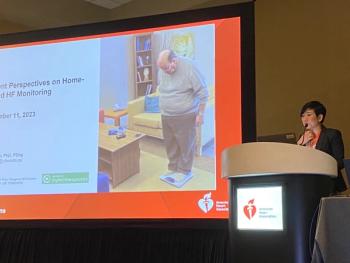
Aging population, chronic diseases put strain on hospital ICUs
It's no secret that the U.S. population is getting older, and with the first of the baby boomers turning 60 this year, that trend isn't going to change anytime soon.
IT'S NO SECRET that the U.S. population is getting older, and with the first of the baby boomers turning 60 this year, that trend isn't going to change anytime soon.
ICU care has been estimated at 1% of the U.S. gross domestic product and currently accounts for as much as 30% to 40% of hospitals costs. Those figures may go even higher in the future, says Edward Seferian, MD, a pediatric critical care physician and researcher for the Mayo Clinic. "The demand for ICU use is projected to increase substantially during the next 20 years because of the aging population," he says.
Dr. Seferian was first author of a Mayo Clinic study, which found that older people and those with chronic illnesses have the highest rates of end-of-life ICU use. Given the aging population, ICUs may be treating many more patients at the end of life, he says.
The study included 818 residents who were admitted to one of eight ICUs at two hospitals in Olmsted County in 1998. The eight ICUs have a total of 154 beds and include medical, surgical and cardiac care units. Patients were managed or comanaged by critical care medicine specialists. In the study, one in five residents died having received ICU care in the last six months of life.
Overall, those patients in their last year of life accounted for more than one-fourth of the ICU days used by Olmsted County residents during the year. End-of-life ICU use for patients in other regions of the country may be even greater as evidenced by higher Medicare spending for inpatient care, Dr. Seferian says.
The proportion of ICU use by residents in their last year of life increased with advancing age. While that may not be a surprising fact, Dr. Seferian calls the degree to which this occurred "striking." Among all ICU days for those age 85 and older, 70% were associated with those in their last year of life, the study found.
Among Mayo study patients who died in the ICU, the most common chronic illnesses were congestive heart failure, cancer and renal disease. Chronic heart disease patients had the highest end-of-life ICU admission rate. "Our findings are consistent with national projections," Dr. Seferian says. "ICU use at the end of life increases with age. That's important with the coming demographic changes."
THE IMPACT ON HEALTHCARE
Caroline Steinberg, vice president of trend analysis for the American Hospital Assn. (AHA), says the findings of the study were nothing out of the ordinary. "People who are older and sicker use more intensive care," she says. "It isn't surprising that ICU use is up."
Newsletter
Get the latest industry news, event updates, and more from Managed healthcare Executive.




















































